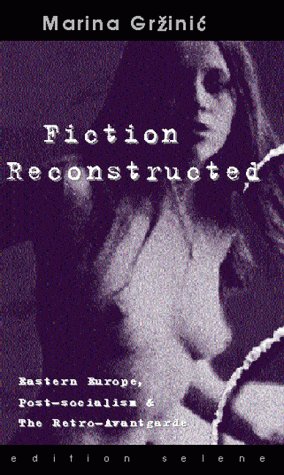Glass Bead, 1: Site 0: Castalia, the Game of Ends and Means (2016) [English/French]
Filed under journal | Tags: · affect, art, mind, philosophy, theory

“The first issue of this journal, as well as Glass Bead’s project at large, is directed towards rethinking art as a mode of rational thought. It starts from the assumption that any claim concerning the efficacy of art—its capacity, beyond either its representational function or its affectivity, to make changes in the way we think of the world and act on it—first demands a renewed understanding of reason itself.
The site on which this issue focuses is Castalia, the fictional province imagined by Hermann Hesse in The Glass Bead Game (1943). Set in Central Europe some five hundred years in the future, Castalia hosts a peculiar society entirely dedicated to the pursuit of pure knowledge. Mobilising Castalia as an equivocal image, at once archetype of modern universalism and fortress delegitimized by its own enclosure, the aim of this issue is to revisit and transform the Castalian model for the unification of reason.
Site 0: Castalia, the game of ends and means is structured around partially overlapping charts. These charts are meant to figure specific routes drawn in the site by the contributors to this issue.”
With contributions by Peter Wolfendale, Guerino Mazzola, Andrée Ehresmann, Mathias Béjean, Ray Brassier, Gabriel Catren, Anselm Franke, Benedict Singleton, Keller Easterling, Giuseppe Longo, Martin Holbraad, Eduardo Viveiros de Castro, Tristan Garcia, Fernando Zalamea, Deneb Kozikoski Valereto, Olivia Caramello, Tarek Atoui, Linda Henderson, Freeman Dyson, Alex Williams, Holly Herndon, Mat Dryhurst, Laboria Cuboniks, and Amanda Beech.
Edited by Fabien Giraud, Jeremy Lecomte, Vincent Normand, Ida Soulard, and Inigo Wilkins
Publisher Glass Bead, February 2016
HTML, PDFs (English)
HTML, PDFs (French)
single PDF (English, 16 MB, updated on 2017-12-6)
See also Issue 2
October, 155: A Questionnaire on Materialisms (2016)
Filed under survey | Tags: · actor-network theory, anthropocene, art, human, materialism, networks, object-oriented ontology, philosophy, speculative realism, subject, subjectivity, thing
“Recent philosophical tendencies of “Actor-Network Theory,” “Thing Theory,” “Object-Oriented Ontology,” “Speculative Realism,”and “Vibrant Materialism,” have profoundly challenged the centrality of subjectivity in the humanities and, arguably, the perspectives that theories of the subject from the psychoanalytic to the Foucauldian have afforded (on the operations of power, the production of difference, and the constitution of the social, for instance). At least four moves characterize these discourses:
• Attempting to think the reality of objects beyond human meanings and uses. This other reality is often rooted in “thingness” or an animate materiality.
• Asserting that humans and objects form networks or assemblages across which agency and even consciousness are distributed.
• Shifting from epistemology, in all of its relation to critique, to ontology, where the being of things is valued alongside that of persons.
• Situating modernity in geological time with the concept of the “Anthropocene,” an era defined by the destructive ecological effects of human industry.
Many artists and curators, particularly in the UK, Germany, and the United States, appear deeply influenced by this shift. Is it possible, or desirable, to decenter the human in discourse on art in particular? What is gained in the attempt, and what—or who—disappears from view? Is human difference—gender, race, power of all kinds—elided? What are the risks in assigning agency to objects; does it absolve us of responsibility, or offer a new platform for politics?” (from the introduction)
Responses by Emily Apter, Ed Atkins, Armen Avanessian, Bill Brown, Giuliana Bruno, Julia Bryan-Wilson, D. Graham Burnett, Mel Y. Chen, Andrew Cole, Christoph Cox, Suhail Malik, T. J. Demos, Jeff Dolven, David T. Doris, Helmut Draxler, Patricia Falguières, Peter Galison, Alexander R. Galloway, Rachel Haidu, Graham Harman, Camille Henrot, Brooke Holmes, Tim Ingold, Caroline A. Jones, Alex Kitnick, Sam Lewitt, Helen Molesworth, Alexander Nemerov, Michael Newman, Spyros Papapetros, Susanne Pfeffer, Gregor Quack, Charles Ray, Matthew Ritchie, André Rottmann, Amie Siegel, Kerstin Stakemeier, Artie Vierkant, McKenzie Wark, Eyal Weizman, Christopher S. Wood, and Zhang Ga.
Edited by David Joselit, Carrie Lambert-Beatty, and Hal Foster
Publisher MIT Press, Winter 2016
ISSN 0162-2870
108 pages
PDF (updated on 2017-11-24)
Comment (0)Marina Gržinić: Fiction Reconstructed: Eastern Europe, Post-Socialism and the Retro-Avantgarde (1997/2000)
Filed under book | Tags: · art, art history, avant-garde, eastern europe, philosophy, post-communism, retro-avant-garde, yugoslavia

“In this book, my point of departure is a difference between Eastern and Western Europe that I try to conceptualize philosophically, insisting on a difference – a critical difference within and not a special classification method marking the process of grounding differences, such as apartheid, as Trinh T. Minh-ha has suggested. The question of who is allowed to write about the history of art, culture and politics in the area once known as Eastern Europe must be posed alongside questions of how and when those events are marked.
The largest part of the book focuses on selected artistic projects and concepts by Mladen Stilinovic (Zagreb), Kasimir Malevich (Belgrade, 1986), and the group Irwin (NSK) (Ljubljana), which were developed in the territory of the former Yugoslavia, and continue to function, develop, and mutate. These projects are read via dialectic positioning (i.e., thesis, anti-thesis, and synthesis) within not only countries of the former Yugoslavia, but also Eastern Europe in general. Finally, they are linked with the notion of ‘Retro-Avant-garde,’ or, as I label it, the new ‘ism’ of the East.” (from the Introduction)
First published in Slovenian as Rekonstruirana fikcija, Ljubljana, 1997.
Edited by Springerin
Publisher edition selene, Vienna, 2000
ISBN 3852661536, 9783852661537
230 pages
via Neda Genova
Review: Franco Torriani (c2005).
PDF (15 MB, no OCR)
PDF (8 MB, OCR’d, from MoW, added 2015-12-4)

